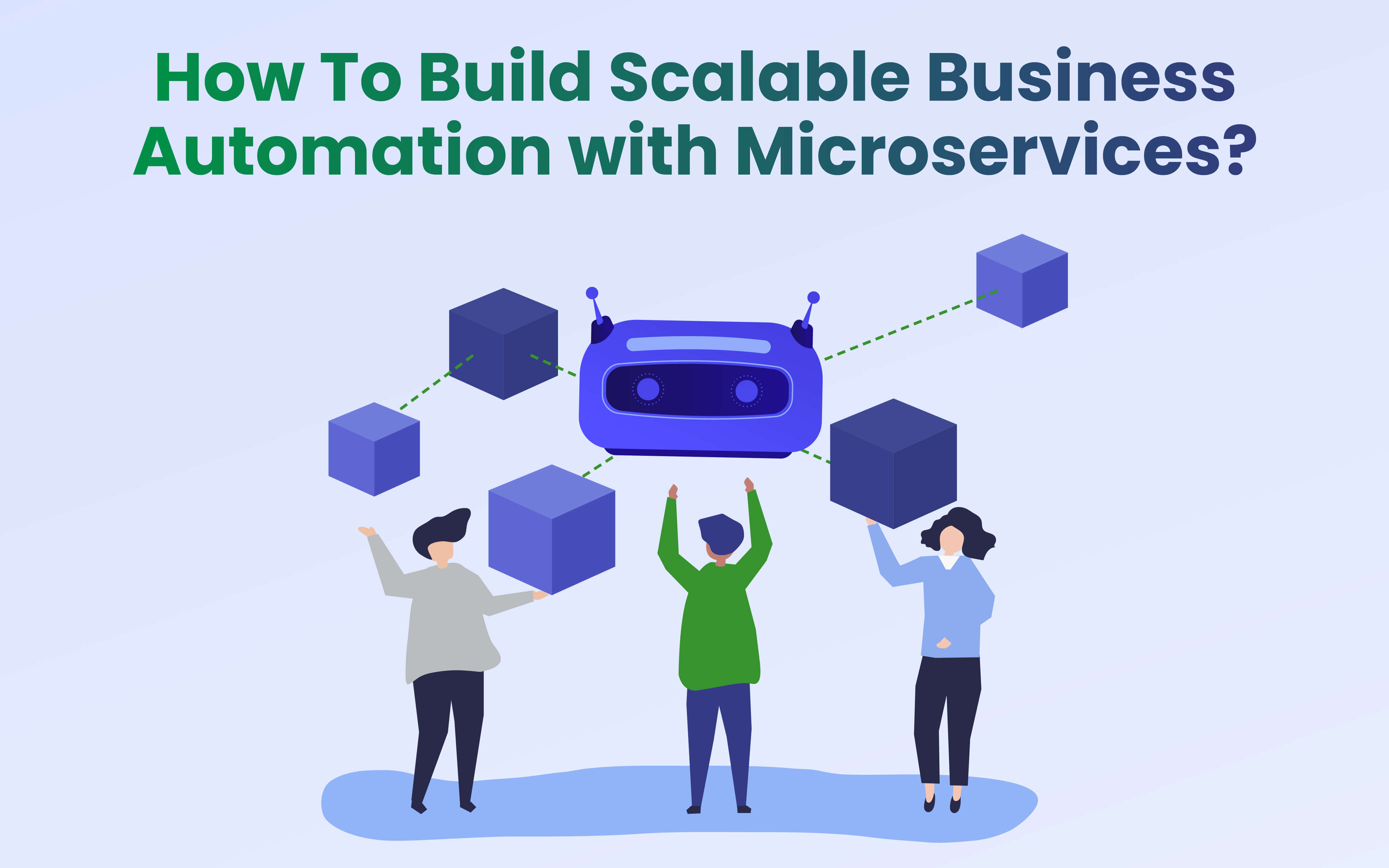Blogs
To know about all things Digitisation and Innovation read our blogs here.
Automation
How To Build Scalable Business Automation with Microservices?
SID Global Solutions
24 March 2023

Business automation is a critical component of any contemporary enterprise, and microservices design has evolved as a common strategy for developing adaptable and flexible systems. Microservices architecture is a software design strategy that divides an application into small, independent services that interact with each other using APIs. This blog will walk you thru and shows the required stages of how to use microservices to create scalable business processes.
Defining your business processes:
Defining your business processes is the first stage in creating flexible business automation with microservices. Begin by identifying and mapping out the procedures that are essential to your company. This will help you comprehend your system’s requirements and decide which services you need to create.
To effectively define your business processes, you should first determine the specific goals and objectives of each process. For instance, you might have a customer service process that involves handling customer inquiries, complaints, and feedback. Once you’ve identified the goals and objectives, you can then break down the process into smaller steps or tasks and map out how each step interacts with the others.
With a clear understanding of your business processes, you can then decide which microservices to create. These microservices should be designed to perform specific functions within each process, allowing you to easily modify, update, or replace them as needed. Additionally, by breaking down your business processes into smaller, modular services, you can create a more flexible and agile system that can quickly adapt to changes in your business needs.
Also Read: How Cloud-Native Applications Are Changing the Game for DevOps Teams?
Designing your microservices:
Microservices architecture is an increasingly popular way of building software systems that are scalable and easy to maintain. When designing microservices, it’s important to ensure that each service is autonomous and self-contained. This means that each microservice should be designed to perform a specific function and should have its own database and logic. This approach enables each microservice to be scaled and maintained independently, allowing for greater flexibility as your business grows. By designing your microservices in this way, you can avoid the issues that can arise when trying to manage a monolithic system, where changes done to one part of the system can have an unintended impact on other parts. Ultimately, designing microservices in this way can help you build a system that is more resilient, easier to maintain, and better able to meet the evolving needs of your business.
Use an API gateway:
An API gateway is a critical component of a microservices architecture that provides a centralized entry point for all your services. The API gateway acts as an intermediary between your clients and your microservices, providing a unified interface for accessing your system’s functionality. It can handle various functions such as routing, load balancing, authentication, and other functions that make managing and scaling your system more manageable.
The API gateway allows you to manage your microservices more efficiently by abstracting away the complexities of individual services and presenting a single interface to the outside world. It also enables you to implement security policies and rate limiting, ensuring that only authorized requests are allowed to access your system.
In addition, an API gateway can help you to scale your microservices by offloading some of the heavy lifting, such as authentication and authorization, from your individual services. It can also help you to improve the performance of your system by providing caching, compression, and other optimizations.
Overall, an API gateway is an essential tool for managing and scaling microservices architecture. It helps to simplify the development and deployment of your system while improving security, performance, and reliability.
Also Read: Navigating the Pitfalls of Legacy Systems in Digital Transformation
Selection of the right technology stack:
Choosing the right technology stack is critical to building scalable business automation with microservices. You need to choose technologies that are well-suited to your business requirements, and that can handle scaling of your system. Microservices architecture is gaining immense popularity among developers due to its ability to break down a large monolithic application into smaller, independent services. One of the key advantages of microservices is that it allows developers to use different programming languages and technologies for each individual service, based on its specific requirements. This means that there is no one-size-fits-all approach when it comes to choosing a technology for building microservices.
Node.js, Java, and Python are some of the most popular technologies for building microservices. Node.js is a popular choice for building lightweight, scalable microservices due to its event-driven, non-blocking I/O model. It is particularly well-suited for handling a large number of concurrent connections and is often used for real-time applications like chat applications and IoT devices.
Java is another widely used technology for building microservices due to its strong typing, reliability, and scalability. It has a vast ecosystem of libraries and frameworks that make it easy to build and deploy microservices. Java is often used for building enterprise-grade applications that require high availability and reliability.
Python, on the other hand, is a popular choice for building data-intensive microservices due to its ease of use and a large number of data processing libraries. It is particularly well-suited for machine learning and data analytics applications, making it a popular choice for building AI-powered microservices.
Overall, the choice of technology for building microservices depends on the specific requirements of the application, the skills and expertise of the development team, and other factors like performance, scalability, and maintainability. Ultimately, the key is to choose a technology that fits the needs of the application and allows developers to build, test, and deploy microservices quickly and efficiently.
Also Read: The Role of Serverless Architecture in DevOps and Agile Development
Automate your deployment process:
In today’s fast-paced digital world, automating your deployment process is crucial for building a scalable and reliable system. With the increasing complexity of modern software applications, it is essential to have a deployment process that is efficient and streamlined. Automating your distribution process means that you can launch new services quickly and easily, without the risk of downtime or disrupting current services.
One tool that can help simplify your deployment process is Kubernetes. Kubernetes is an open-source container orchestration system that automates the deployment, scaling, and management of containerized applications. With Kubernetes, you can easily manage and deploy your applications across multiple clusters and environments. This makes it simpler to control and expand your system as your business grows.
By automating your deployment process, you can save time and reduce the risk of human error. This also frees up your development team to focus on building new features and improving your application, rather than spending time on manual deployment tasks. Ultimately, automating your distribution process is a critical step in building a scalable and reliable system that can grow with your business.
Monitor and optimize your system:
The last step is that you must monitor and optimize your system to ensure that it is operating at full efficiency. Monitor the efficiency of your services with monitoring tools and optimize your system to ensure it is operating effectively. Optimizing database searches, caching commonly used data, and tuning your system to manage higher traffic are all part of this.
In conclusion, creating flexible business automation with microservices necessitates cautious planning and design. You can build a flexible and scalable system that can adapt to the changing needs of your business by defining your business processes, designing your microservices, using an API gateway, selecting the right technology stack, automating your deployment process, and monitoring and optimizing your system.









